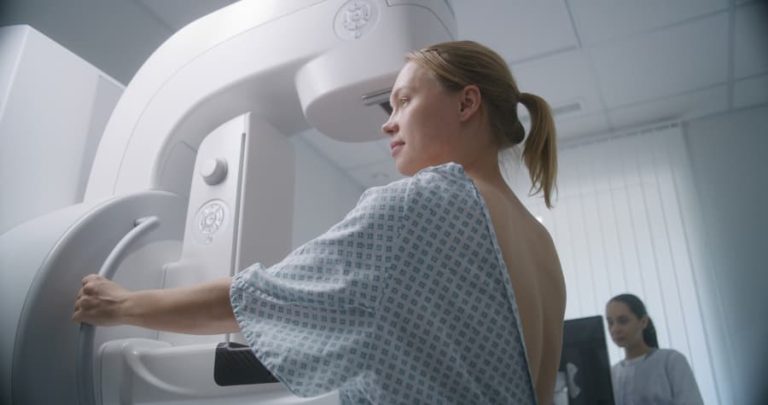
Early Signs of Inflammatory Breast Cancer
Regional Cancer Care Associates (RCCA) provides comprehensive treatment of cancer and blood disorders to patients throughout New Jersey, Connecticut, and the Washington, DC, area. Here,
HIPAA Alert: Potential Data Breach Learn More
Questions on Oncology, Hematology and/or Infusion Clinical Services due to COVID-19 Crisis – CALL 833-698-1623
Important Information for Our Patients Regarding the Coronavirus.
RCCA Providing Area Cancer Patients with Access to Care During Coronavirus Outbreak
RCCA Offering Patients Virtual Visits During Coronavirus Pandemic
Ductal carcinoma in situ (DCIS) is an early, non-invasive stage of breast cancer. Untreated, DCIS can develop into invasive breast cancer. Regional Cancer Care Associates (RCCA) treats all types of breast cancer for patients in New Jersey, Connecticut, Massachusetts, and the Washington, D.C. area. Learn more about RCCA’s cutting-edge treatments for DCIS.
Ductal carcinoma in situ, or DCIS, is Stage 0 breast cancer, the earliest of breast cancer stages. In this stage, cancer cells have formed in the lining of the breast’s milk ducts but have not spread into the duct walls or nearby tissue.
According to the American Cancer Society, DCIS accounts for 1 in 5 new breast cancer diagnoses. Fortunately, it can be treated effectively. Nearly all patients who are diagnosed with DCIS will have successful treatment and a full recovery.

DCIS is considered an early form of breast cancer because its cells are cancerous despite being non-invasive.
Though DCIS can develop into invasive breast cancer, this progression is not inevitable. According to the Breast Cancer Research Foundation, 20% to 50% of DCIS cases will become invasive. In other words, at least half of all cases, and perhaps as much as 80% of cases, will never become invasive. However, it is difficult to predict which cases will become invasive and which will not. While there is a grading system that can help medical oncologists estimate the risk, there is no way to determine with certainty which cases will progress to invasive breast cancer. Comprehensive treatment is the best way to reduce this risk.
DCIS is categorized by nuclear grading. This system evaluates the characteristics of cancer cell nuclei, including their size and shape, in comparison to the nuclei of normal breast cells. Higher-grade DCIS is more aggressive and fast-growing, and more likely to develop into invasive breast cancer. Grades include:
DCIS generally causes no symptoms. Rarely, it may create a small lump in the breast tissue or cause some nipple discharge. In most cases, however, DCIS is not detectable through self-examination or a doctor’s physical examination. Instead, most cases of DCIS are found through mammograms.
The path to diagnosis of DCIS usually involves the following steps:
As noted, nearly all cases of DCIS are detected by mammography. This is why routine screening is so important. It provides the best chances of diagnosing DCIS while it remains pre-invasive, allowing treatment before DCIS develops into a higher stage of breast cancer.
This test uses sound waves to create an image of breast tissue. Rather than taking a picture of the whole breast, ultrasound is typically focused on a specific area. This allows physicians to get a better look at suspicious areas for a closer examination.
This test uses radio waves and strong magnets to create an image. MRI images are often more detailed than mammograms, making them useful for confirming a diagnosis or checking for additional problem areas in the breast.
If a suspicious area shows up on a mammogram or other imaging test, a physician may perform a biopsy. This procedure involves removing some breast cells or fluid from the problem area. The sample is tested to confirm whether the suspicious area has non-cancerous cells, DCIS, or invasive breast cancer.
The recommended treatment for DCIS is surgery. Most patients are given an option between breast-conserving surgery (lumpectomy) or mastectomy, although doctors individualize their recommendations based on several factors, including the extent of cancerous cells.
Lumpectomy is also called breast-conserving surgery, or BCS. This procedure involves removing the tumor and a small amount of breast tissue around it. This allows the patient to keep most of the breast, reducing the aesthetic impact of surgery.
Mastectomy involves removing the entire breast. This procedure is recommended if DCIS affects a large area or if there are multiple areas affected by DCIS. It may also be recommended for patients with recurrent DCIS or a high risk of invasive breast cancer as a way of reducing the risk of recurrence.
Radiation therapy is frequently used after surgery when treating DCIS. This procedure involves targeting cancer cells with radiation to eliminate any cancer cells that the surgery did not remove. Types of radiation treatment for cancer include:
Certain types of DCIS and invasive breast cancer are fueled by the body’s natural hormones. These types are identified through a breast biopsy and are referred to as hormone receptor-positive or HR-positive. If DCIS is confirmed to be HR-positive, hormone therapy may be a treatment option. It is a medication-based treatment that works in one of two ways. One approach works by suppressing the body’s ability to produce hormones such as estrogen or progesterone, which feed the cancer. The other approach interferes with the activity of these hormones,, so that the cancer can no longer use them to grow. The medication may be administered as an injection or taken orally as a pill. It is typically used in conjunction with radiation therapy or surgery.
Regional Cancer Care Associates (RCCA) treats DCIS in patients throughout NJ, CT, MA, and the Washington, D.C., area. Our oncology team serves patients at more than 20 locations, so patients can access care where near their homes. Contact RCCA for more information or to request an appointment with a medical oncologist.
Yes. Ductal carcinoma in situ, also called DCIS, is Stage 0 breast cancer. In this stage, cancer cells have formed in the milk duct lining but have not spread through the duct wall or into neighboring tissue.
Yes, DCIS can develop into invasive cancer if the abnormal cells continue to undergo changes and spread. However, not all cases of DCIS will become invasive cancer.
Treatment of DCIS is recommended to reduce the risk of progression to invasive breast cancer.
Most cases of DCIS are treated using surgery. Radiation therapy and hormonal therapy may be used following surgery to eliminate cancer cells that remain and to reduce the risk of recurrence.
Breast cancer patients can seek the most comprehensive, patient-centered care that the area has to offer at Regional Cancer Care Associates. Our network of highly experienced doctors works together to deliver the care and support you need for all aspects of your life. Call your local RCCA office to learn more about breast cancer or to schedule an appointment for a consultation today.

Regional Cancer Care Associates (RCCA) provides comprehensive treatment of cancer and blood disorders to patients throughout New Jersey, Connecticut, and the Washington, DC, area. Here,

When people think of breast cancer, they generally think of it affecting women. However, in rare circumstances, breast cancer can affect men, most commonly in

First diagnosed with breast cancer in 1992, she has persevered in her battle against the disease for more than 30 years.
When standard cancer treatments aren’t providing the results you want, clinical trials may offer hope. Our physicians use clinical trials to study new treatments, helping transform cancer care for the better. You can enroll in a clinical trial to try groundbreaking treatment plans at zero cost to you.

Regional Cancer Care Associates is one of fewer than 200 medical practices in the country selected to participate in the Oncology Care Model (OCM); a recent Medicare initiative aimed at improving care coordination and access to and quality of care for Medicare beneficiaries undergoing chemotherapy treatment.